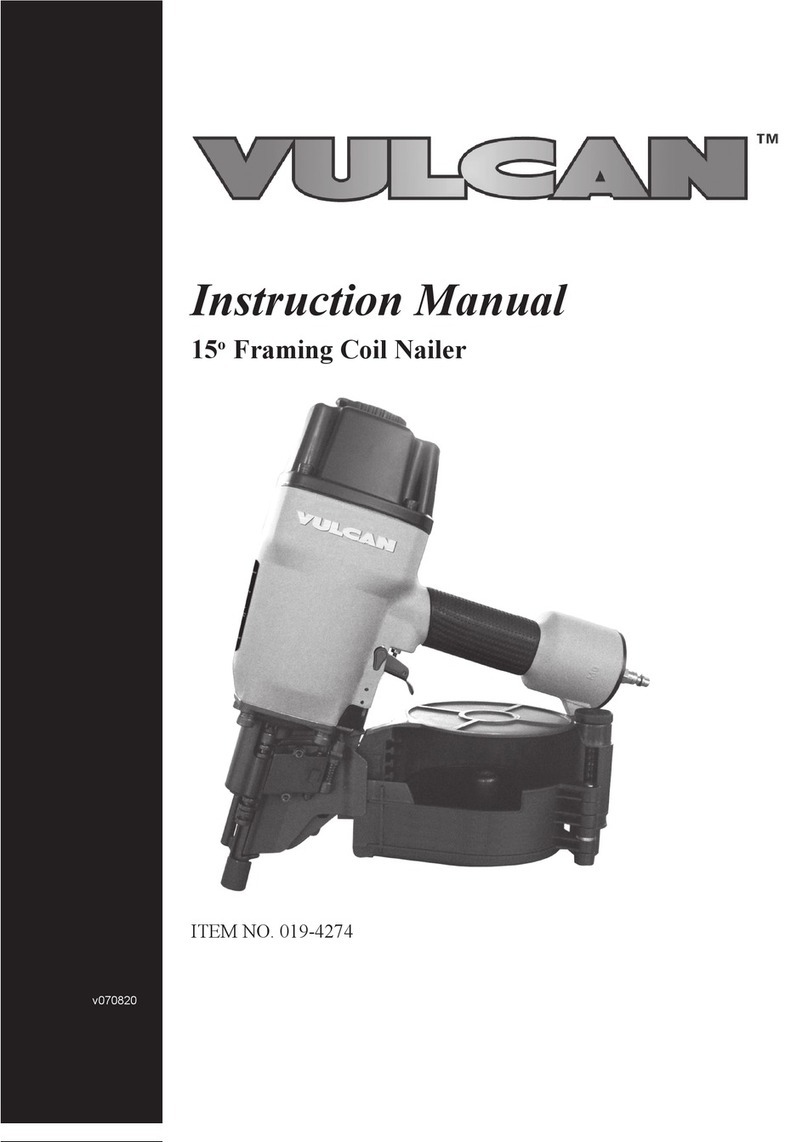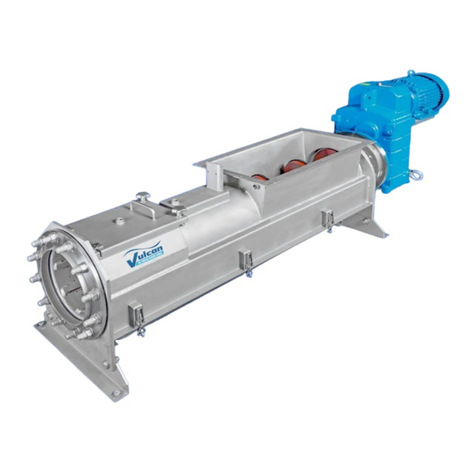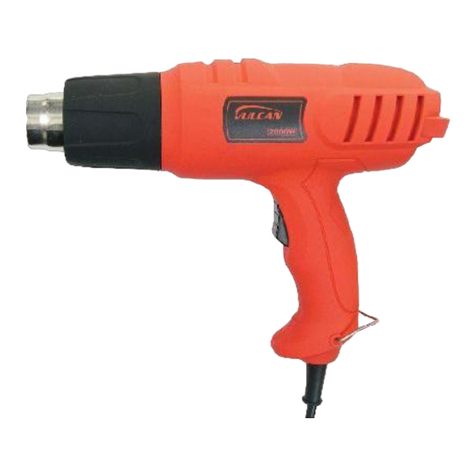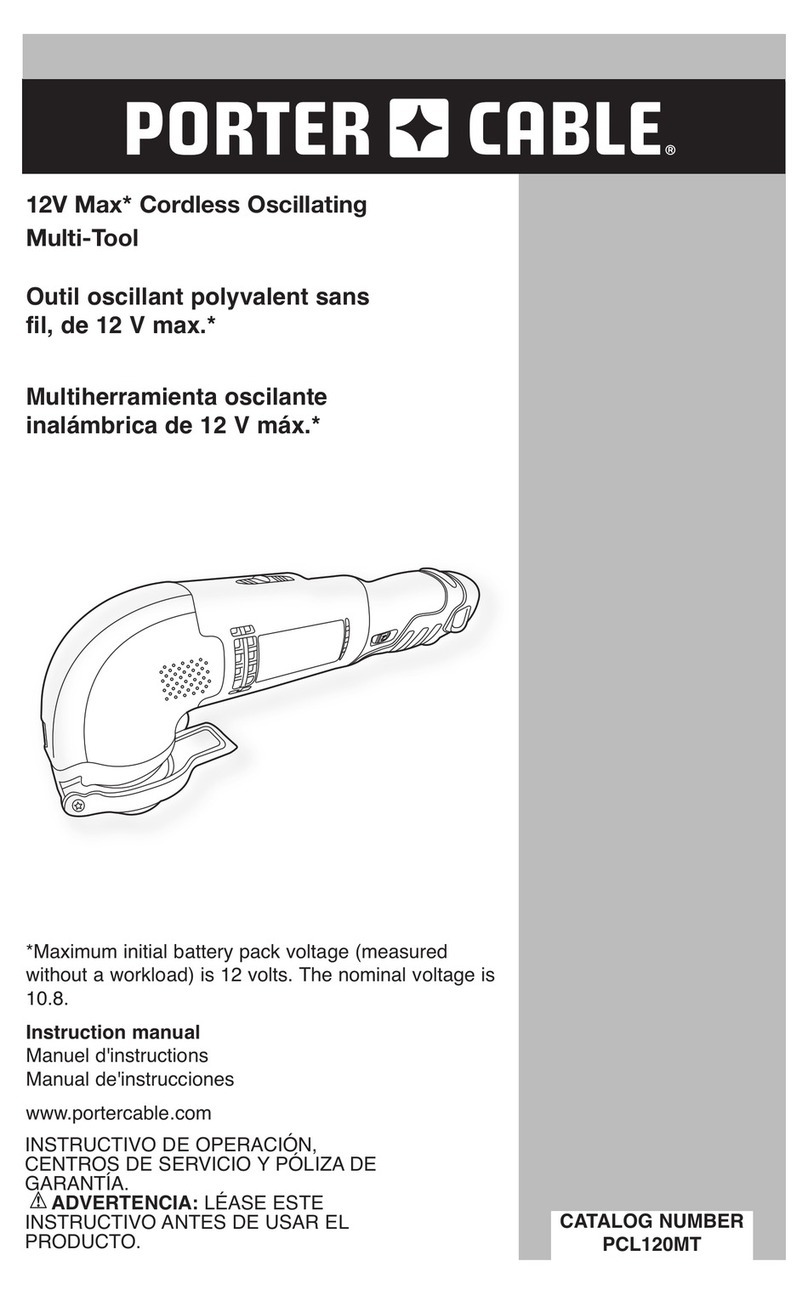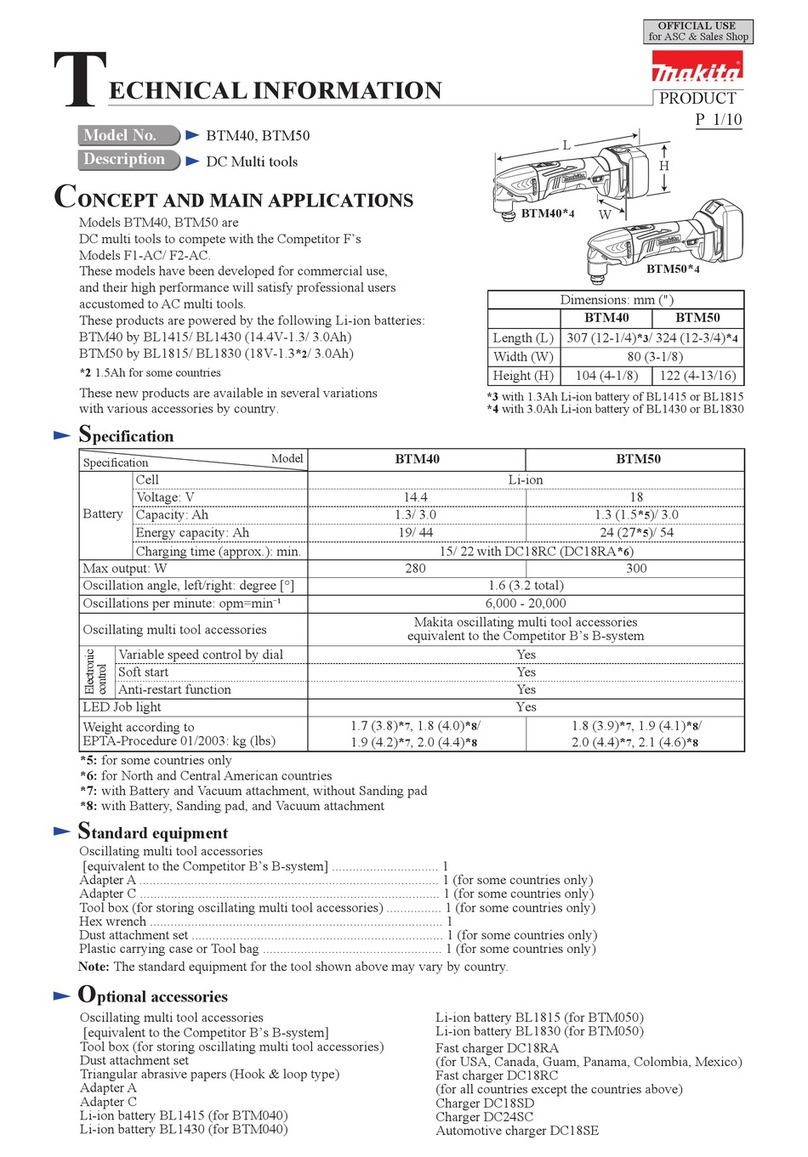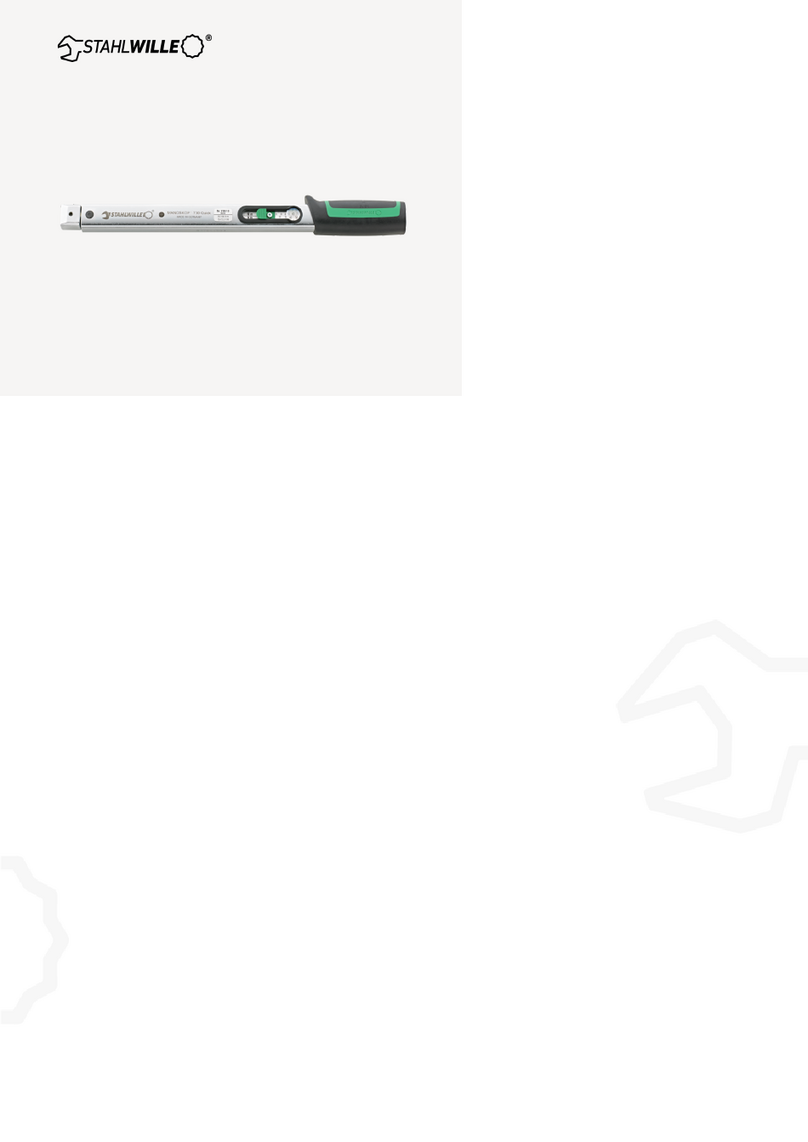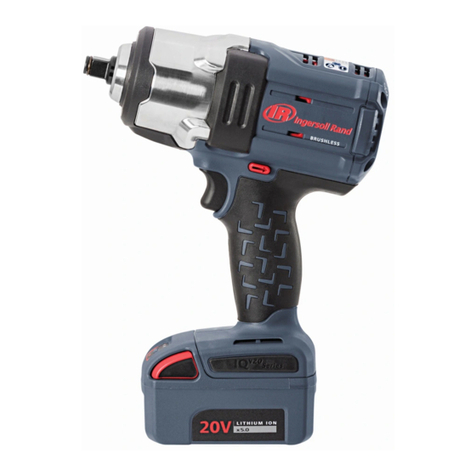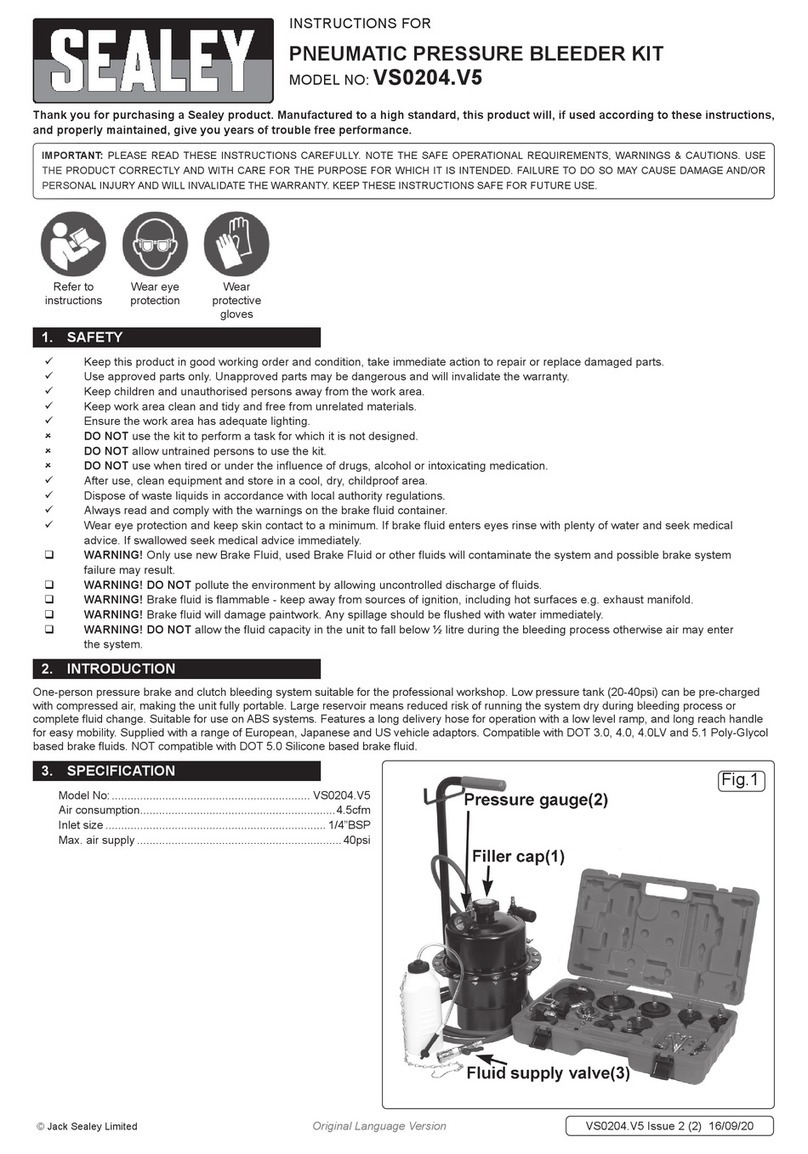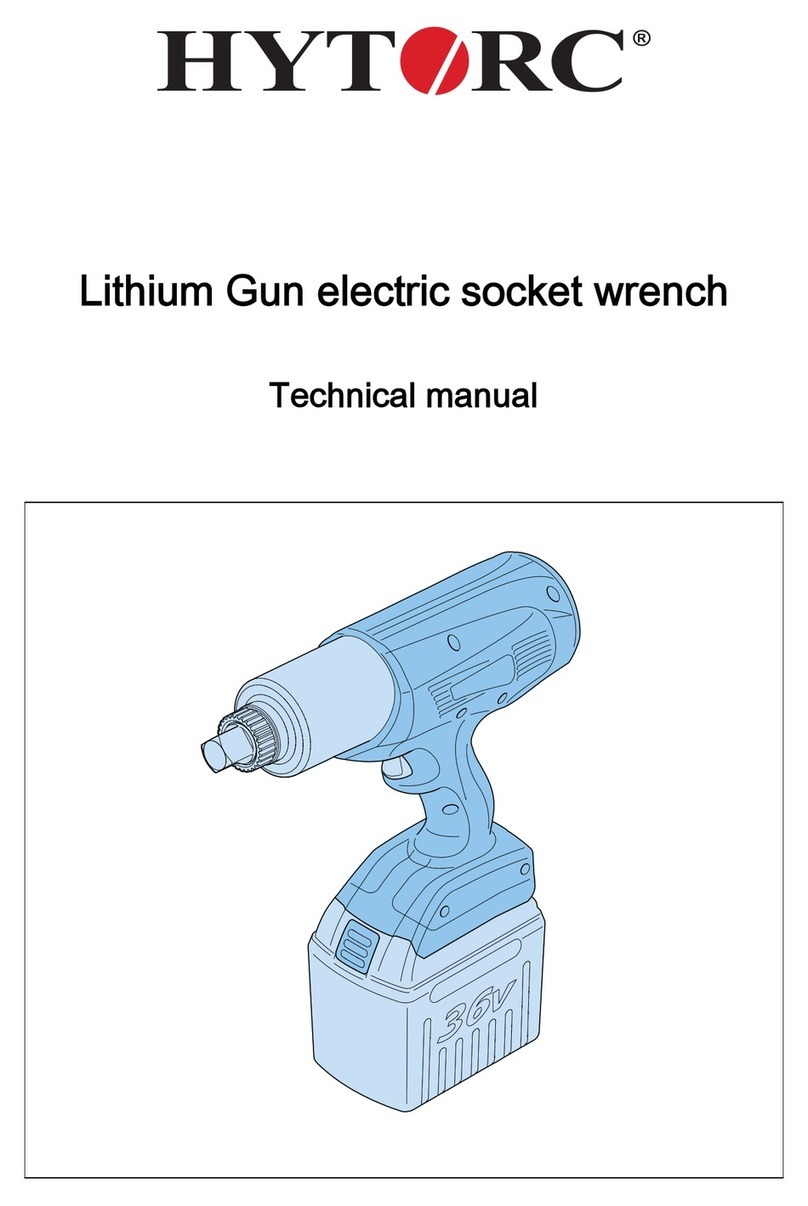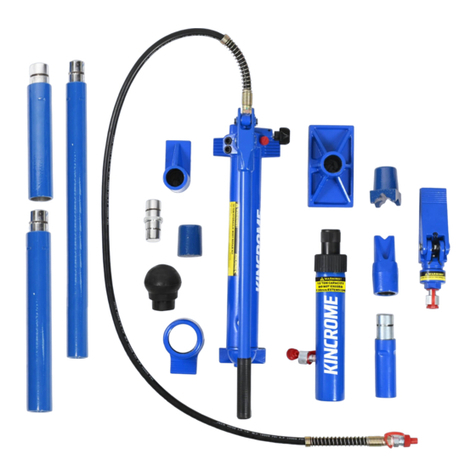Vulcan-Hart 039-8438 User manual

Instruction Manual
Manual de instrucciones
ITEM NO. 039-8438
ARTICULO No. OCN45R 000-0000
v070823
Roong Coil Nailer

2
THANK YOU for your purchase of this Vulcan Air Tool. With proper care and
use you can expect your purchase to provide years of trouble free service!
SHOULD YOU HAVE A QUESTION OR A PROBLEM WITH YOUR
VULCAN TOOL, PLEASE CALL OUR CUSTOMER SERVICE
DEPARTMENT TOLL FREE AT:
1-800-482-0131
Please have the tool, model number and instruction manual at hand before calling.
ONE YEAR LIMITED CONSUMER WARRANTY
If you have a question or should you have a problem with any Vulcan Air Tool, call
the Vulcan Customer Service line at 1-800-482-0131.
This product is warranted to be free from defects to material and workmanship
for a period of ONE YEAR from date of purchase. If defective the product will be
repaired or replaced. Call the Vulcan Power Tool customer service line at 1-800-
482-0131 and a customer representative will attempt to help resolve any issue. If
directed by a representative, return the product along with proof of purchase to
your dealer. Normal wear, damage due to abuse or mishandling or unauthorized
repair is not covered. This warranty does not apply to accessories. This warranty
gives you specic legal rights that vary from state to state.
This tool is intended for consumer use and is not a commercial tool. In the event
the tool is used commercially, the warranty should be for a period of 30 days.
VULCAN AIR TOOLS ARE MADE EXCLUSIVELY FOR:
Memphis, TN 38101

3
SAFETY RULES FOR ALL TOOLS
Read and understand all instructions. Failure to follow all instructions listed
below may result in serious personal injury.
SAVE THESE INSTRUCTIONS
WARNING
!
Work Area
Keep work area clean and well lit. Cluttered
benches and dark areas invite accidents.
Keep by-standers, children, and visitors away
while using your tool. All children should be kept
away from the work area. Don’t let them handle
machines, tools or extension cords. Visitors can
be a distraction and are difcult to protect from
injury. Distractions can cause you to lose control.
Personal Safety
Stay alert. Watch what you are doing & use
common sense. Keep hands and body away from
the path of any potential red fastener. Do not
operate any tool when you are tired, under the
inuence of drugs, alcohol, or medication. A
moment of inattention while operating this tool
may result in serious injury.
Dress properly. Do not wear loose clothing
or jewelry; they can be caught in moving parts.
Protective, non-electrically conductive gloves
and non-skid footwear are recommended when
working. Wear protective hair covering to contain
long hair and keep it from harm. Keep hands dry,
clean and free from oil and grease.
Safety glasses To prevent eye injuries, the tool
operator and all persons in the work area must
wear ANSI Z87.1 approved safety glasses with
permanently attached, rigid side shields.
Hearing protection. Wear ear protection to
safeguard against possible hearing loss.
Guard against electric shock. Prevent body
contact with grounded surfaces: pipes, radiators,
ranges, and refrigerator enclosures. Before
driving fasteners into walls, oors, or wherever
“live” electrical wires may be encountered, try to
ascertain whether there is a danger of shock.
Do not overreach. Keep proper footing and
balance at all times. Do not reach over or across
machines which are running.
Employers must enforce compliance with the
safety warnings and all other instructions
in this manual. Keep it available for use by
everyone assigned to use this tool. Permit only
trained and experienced workers to operate
pneumatic fastening tools.
Tool Use and Care
Use clamps or other practical way to secure
and support the workpiece to a stable
platform. Holding the work by hand or against
your body is unstable and may lead to loss of
control.
Store idle equipment. Store equipment in a dry
area to inhibit rust. Equipment also should be in
a high location or locked up to keep out of reach
of children.
Don’t force the tool. It will do the job better and
more safely at the rate for which it was intended.
Use the right tool. Don’t force a small tool or
attachment to do the work of a larger industrial
tool. Don’t use a tool for a purpose for which it
was not intended
Extension cords. Observe warnings that
accompany air compressors concerning the use of
correct gauge and and concerning insulation for
outdoor use.
Service
Check for damaged parts. Before using this
tool, any part that is damaged should be carefully
checked to determine that it will operate properly
and perform its intended function. Check for
alignment of moving parts, binding of moving
parts, breakage of parts, mountings, and other
conditions that may affect its operation. Inspect
screws and tighten any ones that are loose. Any
part that is damaged should be properly repaired
or replaced by an authorized service center unless
otherwise indicated elsewhere in the instruction
manual. Have defective switches replaced by an
authorized service center. Don’t use the tool if

4
switch does not turn it on and off properly.
User service. Some user-serviceable components
are described in the Troubleshooting section. We
cannot guarantee repairs made or attempted by
anyone other than authorized agencies.
Tool service must be performed only by
qualied repair personnel. Service or
maintenance performed by unqualied personnel
could result in risk of injury. For example, internal
wires may be misplaced or pinched, safety guard
Guard against electric shock. Prevent body
contact with grounded surfaces: pipes, radiators,
ranges, and refrigerator enclosures. Before
driving fasteners into walls, oors, or wherever
“live” electrical wires may be encountered, try to
ascertain whether there is a danger of shock.
Hearing protection. Wear ear protection when
using the tool for extended periods. Prolonged
exposure to high intensity noise can cause
hearing loss.
Safety glasses To prevent eye injuries, the tool
operator and all persons in the work area must
wear approved safety glasses conforming to ANSI
Z87.1 specications with permanently attached,
rigid side shields.
Use clean, dry, regulated, compressed air at 70
to 90 psi.
Do not connect tool to pressure which
potentially exceeds 200 psi.
Air hose. Only use hose that is rated for a
minimum working pressure of 150 psi or 150%
of the maximum system pressure, whichever is
greater.
Never use oxygen, carbon dioxide, combustible
gases or any other bottled gas as a power
source for this tool. Explosion and serious
personal injury could result.
Couplings. Connect tool to the air supply hose
with 1/4” NPT couplings that remove all pressure
from the tool when the coupling is disconnnected.
Be aware of air hoses and their connections.
Don’t trip over hoses. Make sure all connections
are tight.
Disconnect tool from air supply hose before
return springs may be improperly mounted.
When servicing tool, use only identical
replacement parts. Follow instructions in
the Maintenance section of this manual. Use
of unauthorized parts or failure to follow
Maintenance instructions may create a risk of
injury. Certain cleaning agents such as gasoline,
carbon tetrachloride, ammonia, etc. may damage
plastic parts.
SAFETY RULES FOR AIR NAILERS
doing any disassembly, maintenance, loading
fasteners, clearing a jammed fastener, leaving
the work area, moving the tool to another
location, or handing the tool to another person.
Never use a tool that is leaking air, has missing
or damaged parts, or requires repair. Before
each use, make sure all screws and caps are
securely tightened.
Check for damaged parts. Never use a tool if
safety, trigger, or spring are inoperable, missing or
damaged. Do not alter or remove safety, trigger,
or springs. Make daily inspections for the free
movement of trigger and safety mechanism.
Replacement parts. When servicing, use
only identical replacement parts and fasteners
recommended by us.
Be sure the tool is disconnected from the air
supply before loading the fasteners. Take
care on re-connection: fasteners may be red
accidentally during connection. The fastener
driving mechanism may cycle when the tool is
connected to the air supply.
Assume the tool contains fasteners at all times.
Always keep it pointed away from yourself and
others. No horseplay. Respect the tool as having
lethal potential.
Do not load fasteners with trigger or safety
depressed. The tool may unintentionally re a
fastener.
Do not depress the trigger unless the nosepiece
is directed at the worksurface or when not
driving fasteners. Never carry tool with nger on
or touching the trigger mechanism: tool may re
an unwanted fastener.

5
The warnings, cautions, and instructions detailed in this manual cannot cover all
possible conditions and situations that occur. It must be understood by the operator
that COMMON SENSE AND CAUTION ARE FACTORS that cannot be built into
this product, but MUST BE SUPPLIED BY THE OPERATOR.
Fire fasteners into work surface only and never
into materials too hard to penetrate
Grip tool rmly to maintain control while
allowing the tool to recoil away from the work
surface as the fastener is driven. If the safety is
allowed to recontact the work surface before the
trigger is released, an unwanted fastener will be
red.
Do not drive fasteners on top of other
fasteners, or with the tool at too steep an angle:
the fasteners can ricochet causing personal injury.
Do not drive fasteners too close to the edge
of the workpiece. The workpiece is likely to
split, allowing the fasteners to y free or ricochet
causing personal injury.
WARNING
!

6
Nomenclature for No. 039-8438 Roong Coil Nailer
KEY
A) Contact tip
B) Depth adjustment knob
C) 360 degree re-directable exhaust port
D) Trigger
E) Male quick-connect tting
SPECIFICATIONS
= Shoots standard 7/8” - 1-3/4” x 11 ga. (0.120”) at, full round-head
(max. head diam: 0.39”) roong coil nails in 120 nail, 15-16 degree
wire-collated rolls
= Operating pressure: 70-120 psi
= Air consumption: 0.1 cubic foot per cycle @ 100 psi
= Nail Capacity: 120 nail coil
= Air Inlet: 1/4” NPT
= Weight: 5.2 lbs
= Pkg. weight: 9.5 lbs
F) Shingle guide
G) Lower nail housing
H) Upper nail housing
I) Feed cover latch
J) Feed cover plate
g.1

7
OPERATION AND USE INSTRUCTIONS
WARNING
!
BE SURE THAT YOU READ, UNDERSTAND
AND FOLLOW THE SAFETY RULES THAT ACCOMPANY THIS
MANUAL. THIS WILL ALLOW FOR BEST USE AND MAXIMUM
USER SATISFACTION.
The Vulcan Model 039-8438 is a light duty, coil fed, pneumatic nailer, using
compressed air as a power source. It is designed to install 7/8”– 1-3/4”, 11 ga.
(0.120”) at, full round-head roong coil nails in 120 nail, 15 degree wire-collated
rolls. The tool is made with a magnesium alloy body and cylinder cap to provide
light weight while maintaining high strength and rigidity.
POWER SOURCE
This tool is designed to operate on clean, dry, compressed air at regulated
pressures between 70 - 120 psi (max. 120 psi). The preferred system would include
a lter, a pressure regulator, and an automatic oiler located as close to the tool as
possible. (Within 15 ft. is ideal). All compressed air contains moisture and other
contaminates that are detrimental to internal components of the tool. An airline lter
will remove most of these contaminates and signicantly prolong the life of the tool.
If an in-line oiler is not available: place 5 or 6 drops of oil into the tool’s air inlet at
the beginning of each workday.
Nailer Air hose Regulator
Oiler Filter
Air Supply
WARNING
!
l All line components (hoses, connectors, lters, regulators, etc.) must meet
150% of the maximum system pressure. Please try to use a hose of ID 3/8”
connecting nailer with compressor.
l Do not connect this tool to a system with maximum potential pressure greater
than 180 psi.
l Disconnect your air line from your nailer using the quick connect on the air
hose. Do not unscrew the air inlet from the nailer with your air hose connected.
l Disconnect the tool from the air supply before loading fasteners, performing
maintenance, clearing a jammed fastener, leaving the work area, moving the
tool to another location, or handing it to another person.

8
3. The adjuster plate can be moved up and down
when twisting the adjuster nut (B, g. 4).
According to the length of nail, the adjuster
plate should be adjusted correctly to the posi-
tion indicated inside the lower nail housing.
4. Place a coil of nails over the lower nail housing. Uncoil
enough nails to reach the feed hook and place the
second nail between the teeth on the feed hook
(Fig. 4A).
5. Close the magazine cover. Close and latch the feeder
cover.
6. Adjust the directional exhaust de ector so that the
exhaust air will be directed
away from the operator. Grasp the de ector and rotate it to the desired
position.
7. Adjust the shingle guide by loosening the retaining screw and sliding
the shingle guide to the desired position. Tighten the retaining screw
rmly. (The shingle guide can be used as an aid in positioning the
shingle to be nailed at a specic distance from the front edge of the
previous row of shingles.)
2. Press down latch, open feeder cover and upper nail
housing (A, g.3)
CAUTION
!
lDisconnect tool from the air supply.
lKeep the tool pointed away from yourself and others at all times.
lDo not load fasteners with safety or trigger depressed.
lAlways wear approved safety glasses and hearing protection when preparing or
operating this tool.
lNever use a tool that leaks air or needs repair.
LOADING FASTENERS
1. After reading and understanding this entire manual,

9
USING THE TOOL
This tool can be red in two different ways:
1. Position the nose of the tool onto the work surface, push forward on the tool
to depress the safety, and squeeze the trigger to re a nail. This “sequential”
method provides the most accurate fastener placement.
2. Squeeze and hold the trigger while pushing the nose of the tool against the
work surface. The tool will re a nail every time the safety is depressed. This
“bump re” method allows very fast, repetitive fastener placement.
CAUTION
!
= Remove nger from the trigger when not driving fasteners.
= Never carry tool with nger on trigger: tool will re a fastener if the safety is
bumped.
= Keep tool pointed in a safe direction at all times.
= Never attempt to drive nails into materials too hard to penetrate, or at too
steep an angle, or too near the edge of the workpiece. The fastener can
ricochet causing personal injury.
= Disconnect tool from air supply before doing any disassembly, maintenance,
clearing a jammmed fastener, leaving the work area, moving the tool to another
location, or handing the tool to another person.
= Clean and inspect the tool daily. Carefully check for proper operation of trigger
and safety mechanism. Do not use the tool unless both the trigger and
the safety mechanism are functional, or if the tool is leaking air or needs any
other repair.
The depth to which a nail is driven is controlled by the depth
adjustment knob (g.6), reachable through the window in the front
of the clear plastic guard. The depth of drive is factory adjusted to
maximum.
Test re a nail into a sample of the material you will be working
on and check depth. If a change is desired, rotate the adjustment
knob clockwise (upward)
to increase the depth, counterclockwise (downward) to decrease it.
Test re another nail and check depth again. Adjust as necessary.
FASTENER DEPTH
Fig.6
8. Re-connect the tool to the air supply, being careful to aim the nosepiece
in a safe direction, and careful to avoid touching the trigger or the safety
mechanism. This is to prevent harm from fasteners accidentally discharging
should the fastener driving mechanism cycle when the tool is connected to the
air supply.
9. The tool is ready to operate.

10
MAINTENANCE
CAUTION
!
Disconnect the tool from the air supply before cleaning and
inspecting the tool. Correct all problems before operating.
CLEAN AND INSPECT DAILY
= Add pneumatic tool oil into the oiler regularly to assure that all moving.
Frequent, but not excessive lubrication is required for the best performance.
Oil added through the air line connection will lubricate the inside parts. An
automatic oiler is recommended, but 5 to 6 drops of oil may be added manually
into the tool’s air intake at the male quick-connect tting (F, g.1) at the
beginning of each workday and after about every hour of continuous use. Only
a few drops at a time are necessary. More than this will pool inside the tool
and be expelled from the tool’s exhaust during ring. USE ONLY PNEUMATIC
TOOL OIL. Do not use detergent oil or oil with other additives, as these can
cause accelerated wear on the seals.
= Check the lter of the compressor weekly. Open drain cock to drain all water
and contaminants out of the air tank.
= Wipe the tool clean.
= Blow the tool clean using high compressed air, and then use non-ammable
cleaning solutions to wipe exterior of tool if necessary.
= Do not soak tool in cleaning solutions. Such solutions can damage internal
CLEARING A JAMMED FASTENER
CAUTION
!
Disconnect the tool from the air supply.
1. Open the feeder cover and the magazine cover.
2. Remove any remaining fasteners from the nailer.
3. Use a slender, soft steel rod to push the drive blade to its uppermost position.
4. Remove the jammed fastener with needle nose pliers.
5. Follow instructions in LOADING FASTENERS to reload fasteners.
CAUTION
!
=Keep the tool pointed away from yourself and others at all times.
=Always connect the tool to air supply before loading fasteners.
=Do not load fasteners with safety or trigger depressed.
=Always wear approved safety glasses and hearing protection when preparing
or operating this tool.
=Never use a tool that leaks air or needs repair.

11
TROUBLESHOOTING
WARNING
!
Stop using the tool immediately if any of the following problems occur.
Serious personal injury may result. Any repairs or replacements must be done
by qualied personnel or by an authorized service centre only.
CAUTION
!
= Disconnect the tool from air supply before performing any service procedure.
= When inserting new or re-installing O-rings, make sure they are clean and
lubricated with an O-ring lubricant.
parts. The exposed portion of the small piston rod and feed hook must be kept
clean.
= Inspect trigger and safety mechanism daily to assure system is complete and
functional.
= Keep all screws tight. Loose screws can cause personal injury or damage to
the tool. Check if there are worn and damaged parts. If any, please replace
immediately.
PROBLEM CAUSE CORRECTION
Trigger area
leaks air
O-ring in trigger valve stem is
worn or damaged
Check or replace O-ring /
lubricate
O-ring in trigger valve head is
worn or damaged
Check or replace O-ring /
lubricate
Foreign matter Clean tool and lubricate
Lower body /
nose leaks air
Loose nose screws Tighten & recheck
O-ring between body & nose
is damaged
Check or replace O-ring /
lubricate
Bumper is damaged Replace bumper
Foreign matter between
bumper and body
Disassemble and clean
Upper body /
nose leaks air
Loose screw connecting
cylinder and body
Tighten screw and re-check
O-ring is damaged Check or replace O-ring /
lubricate
Gasket is damaged Replace gasket

12
TROUBLESHOOTING
PROBLEM CAUSE CORRECTION
Failure to cycle Tool dry, lack of lubrication Use air tool lubricant
Spring in cylinder cap is
damaged
Replace spring
Head valve stuck in cap Disassemble, check, lubricate
Fasteners
driven too
deeply
Safety bracket position is
incorrect
Turn adjuster knob to lower
bracket
Air pressure too high Decrease air pressure
Skips fasteners,
intermittent feed
Foreign matter between small
piston and small cylinder
Disassemble / clean /
lubricate
Small piston O-ring is worn &
damaged
Check or replace O-ring /
lubricate
Tool dry, lacks lubrication Use air tool lubricant
Skips fasteners,
intermittent feed
Foreign matter between small
piston & cylinder
Disassemble / clean /
lubricate
Small piston O-ring is worn &
damaged
Check or replace O-ring /
lubricate
Tool dry, lacks lubrication Use air tool lubricant
Spring on the small piston is
damaged
Replace small piston spring
Air pressure is too low Raise pressure (not more
than 120psi)
Nose/ body connecting
screws are loose
Tighten all screws
Stop hook does not stop
fasteners
Replace taper spring in the
stop hook
Bent fasteners Use recommended fasteners
Wrong size fasteners Use recommended fasteners
Gasket is damaged Replace gasket/ tighten screw

13
TROUBLESHOOTING
PROBLEM CAUSE CORRECTION
Small piston is dry Open nail housing, place
several drops of air tool oil
into the end cover hole of the
small piston
Small piston bumper is worn
& damaged
Replace bumper & lubricate
small piston
Feed hook is binding Clean feed hook & torsion
spring
Nail length does not match
magazine setting
Turn the adjustment knob
to raise or lower the nail
restrictive plate to suit
Welded collating wires in nail
coil broken
Stop using
Tool runs slowly
or has power
loss
Tool dry, lacks lubrication Use air tool lubricant
Spring in cylinder cap is
damaged
Replace spring
Foreign matter between
piston assembly and cylinder
Disassemble / clean /
lubricate
Cylinder is not assembled in
the home position
Reassemble after
disassembling
O-ring on the valve is dry
after disassembly
Lubricate. Reassemble
Air pressure is too low Raise pressure (not more
than 120psi)
Driver blade is worn Replace piston assembly
Inner diameter of air supply
hose is too small
Use larger diameter hose
Fasteners are
jammed
Fasteners are wrong size Use recommended fasteners
Welded collating wires in nail
coil broken
Stop using

14
PARTS LIST
Please refer to the schematic drawing on page 16
No. DESCRIPTION
1 Screw
2 Spring washer
3 Bushing
4 Exhaust cover
5Washer
6Screw
7 Spring washer
8 Cylinder cap
9 Gaske
10 O-Ring 36.3 x 2.5
11 O-Ring 55.4 x 3
12 Spring
13 Valve
14 O-Ring 40.2 x 2.3
15 Valve seal
16 Valve seat
17 Stop washer
18 Washer
19 O-Ring 43.3 x 3.5
20 Piston assembly
21 Cylinder
22 O-Ring 50.5 x 2.5
22A Restrictive plate
22B O-Ring 70.4 x 3.5
23 Cylinder seal
24 Bumper
25 Protective piece
No. DESCRIPTION
26 Soft spacer
27 Body
28 O-Ring 46 x 1.3
29 Restrictive washer
30 O-Ring 8.3 x 1.8
31 Nose
32 Screw
33 Bracket
34 Spring
35 Adjuster
36 Bracket assembly
37 Spring pin
38 Safe bracket guide
39 Trigger valve guide
40 O-Ring 12.8 x 1.9
41 O-Ring 14.3 x 1.9
42 O-Ring 6.4 x 1.5
43 Trigger valve guide
43A Bushing
44 Trigger valve guide
45 O-Ring 12.3 x 1.9
46 Washer
47 Trigger
48 Trigger pin
49 Spring
50 Feed hook
51 Washer

15
PARTS LIST
Please refer to the schematic drawing on page 16
WARNING
!
Repairs should be made by an authorized repair centre.
Opening this tool could invalidate your warranty.
No. DESCRIPTION
52 Feed hook pin
53 Torsion spring
54 Piston assembly
55 O-Ring 24.3 x 2.8
56 Piston bumper
57 Spring
58 Cover
59 Locking washer
60 Screw
61 Spring pin
62 Handle
63 Washer
64 Latch
65 Pin
66 Protector
67 Spring
68 Shaft
69 Pin
70 Stopped hook
71 Taper spring
72 Block plate
73 Spring washer
No. DESCRIPTION
74 Screw
75 Nut
76 Washer
77 Connected plate
78 Support
79 Bracket
80 Screw
81 Screw
82 Lower nail housing
83 Pin
84 Adjuster bushing
85 Adjuster stem
86 Spring
87 Steel ball
88 Adjuster plate
89 Spring pin
90 Adjuster nut
91 Upper nail housing
92 Soft grip sleeve
93 O-Ring 48.5 x 2.5
94 End cap
95 Air plug

16
SCHEMATIC DRAWING
Table of contents
Other Vulcan-Hart Power Tools manuals
Popular Power Tools manuals by other brands
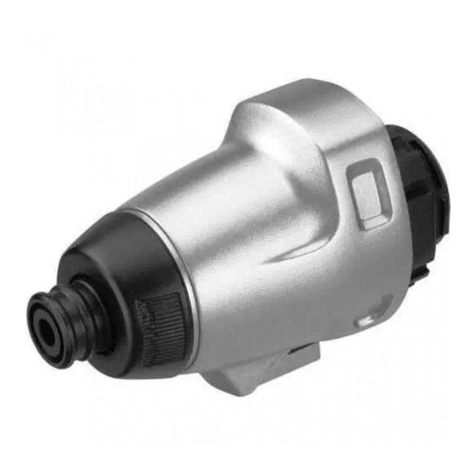
Black & Decker
Black & Decker MTIM3 manual

Reliable
Reliable 1000FR instruction manual
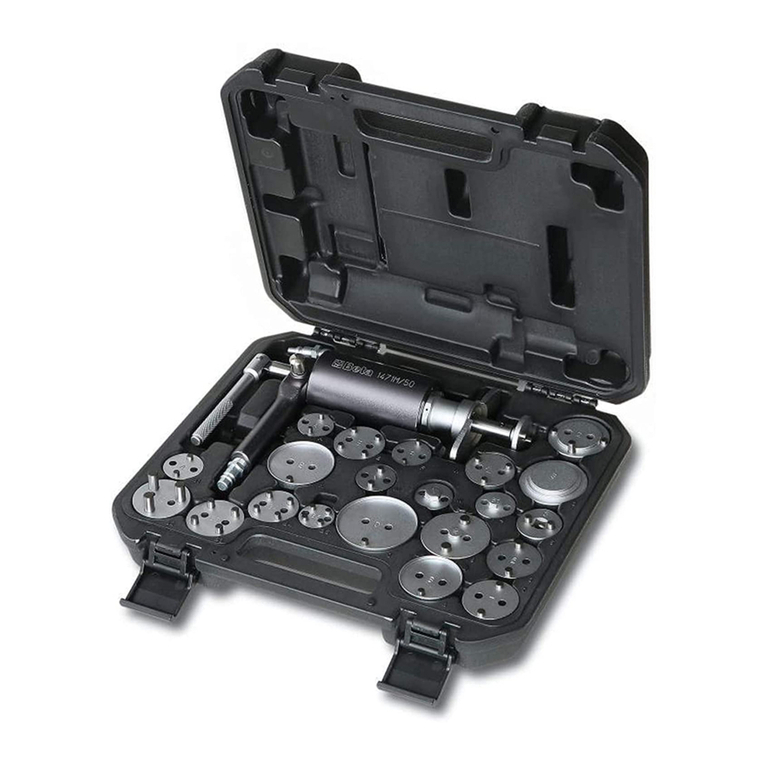
Beta
Beta 1471M/C22 Operation manual and instructions

Bosch
Bosch Professional GSR 18 VE-2-L Original instructions
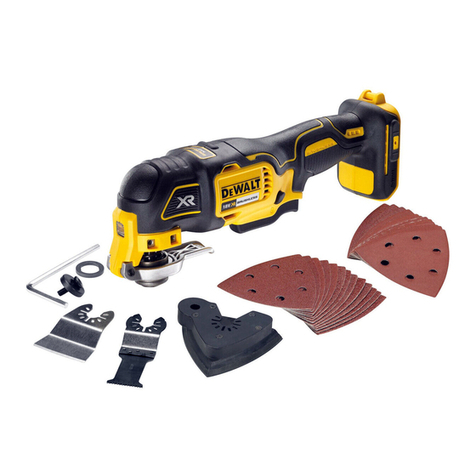
DeWalt
DeWalt XR DCS355N Original instructions

Würth
Würth STP 140 EXACT-S Translation of the original operating instructions
